
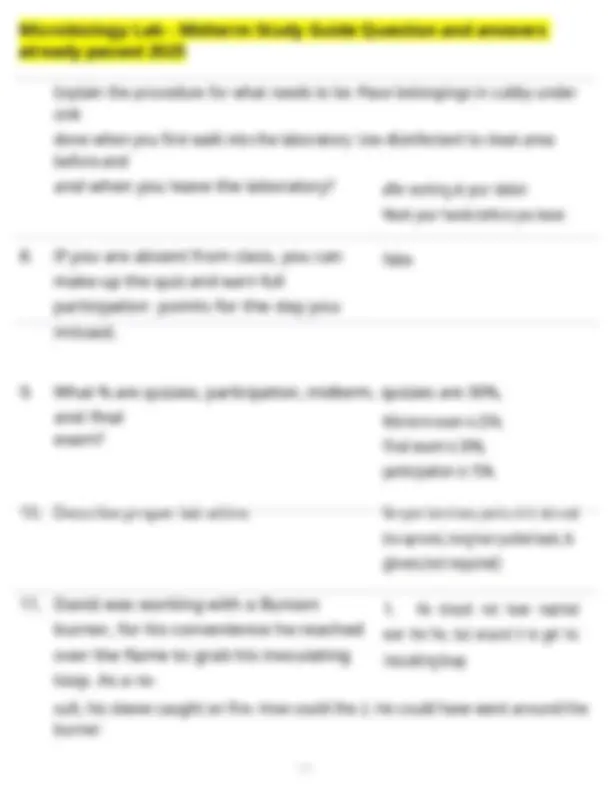
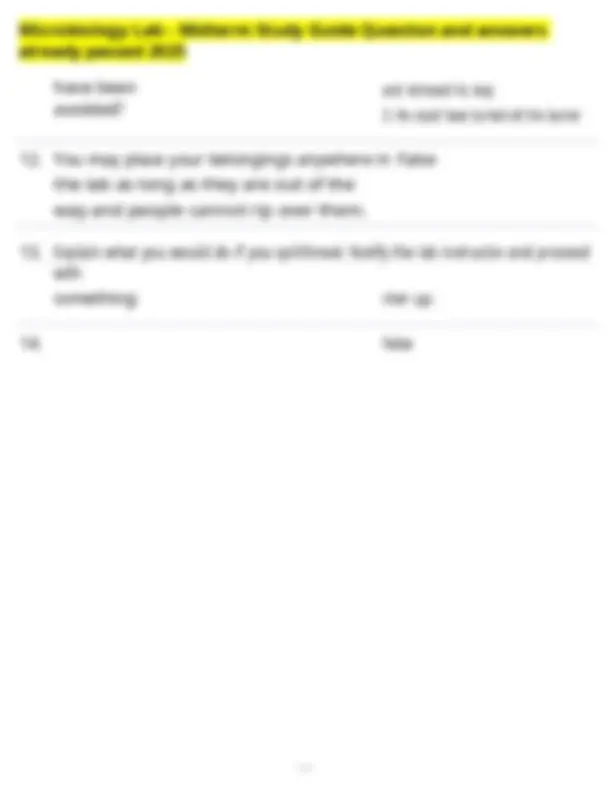
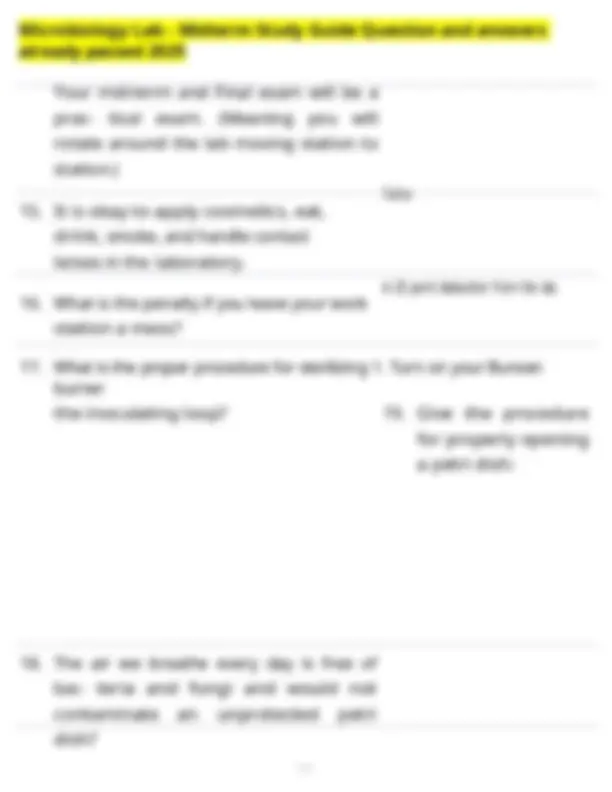
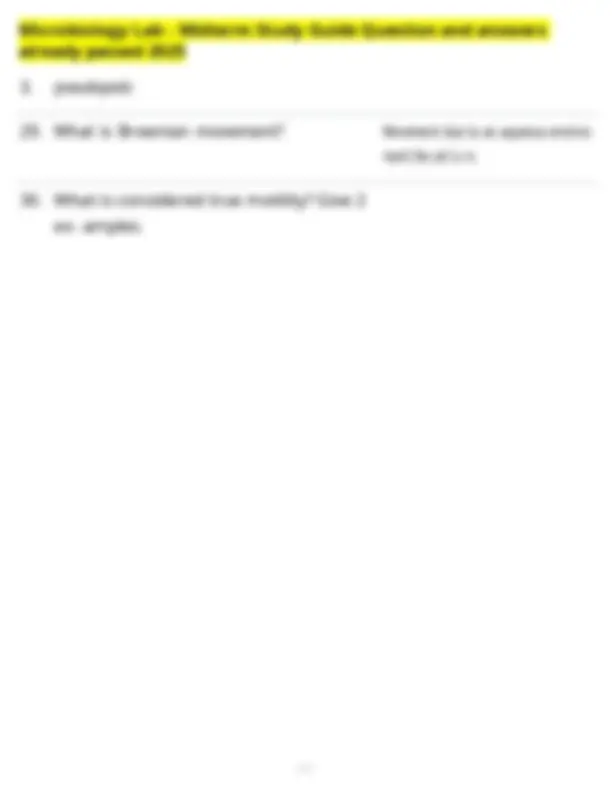
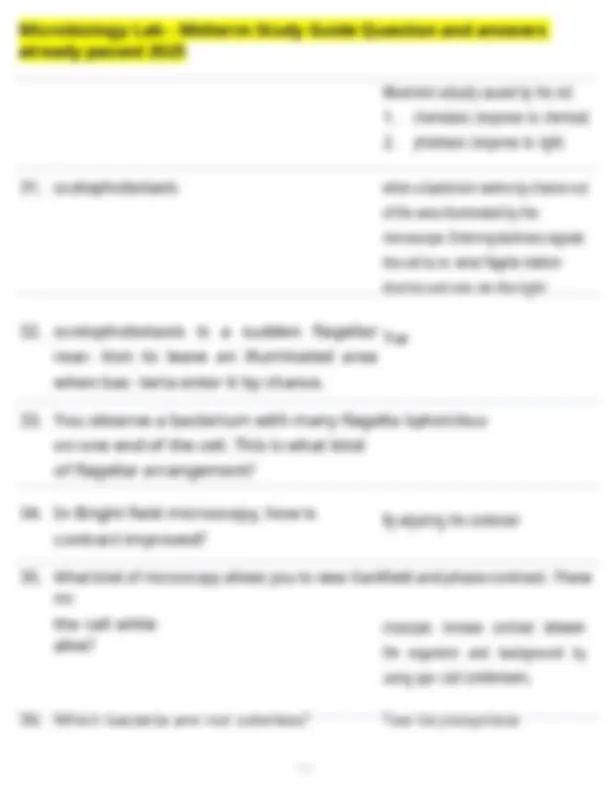
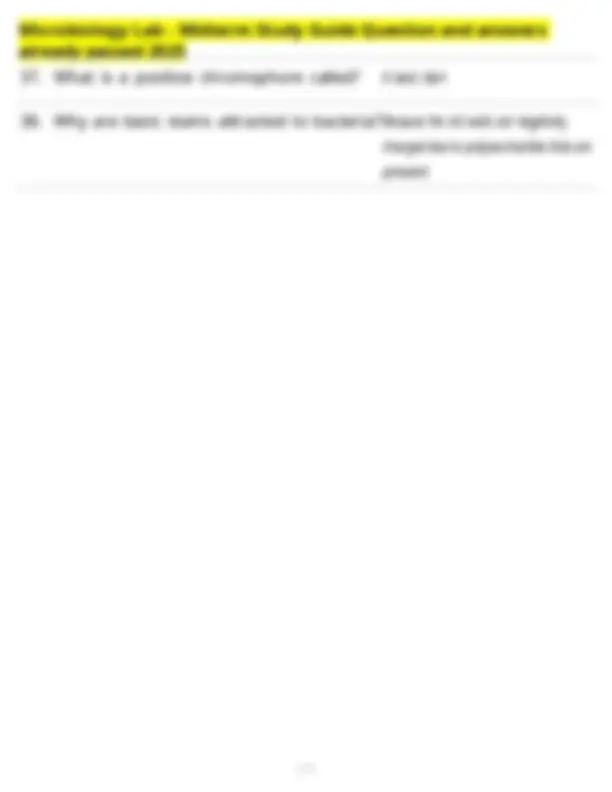
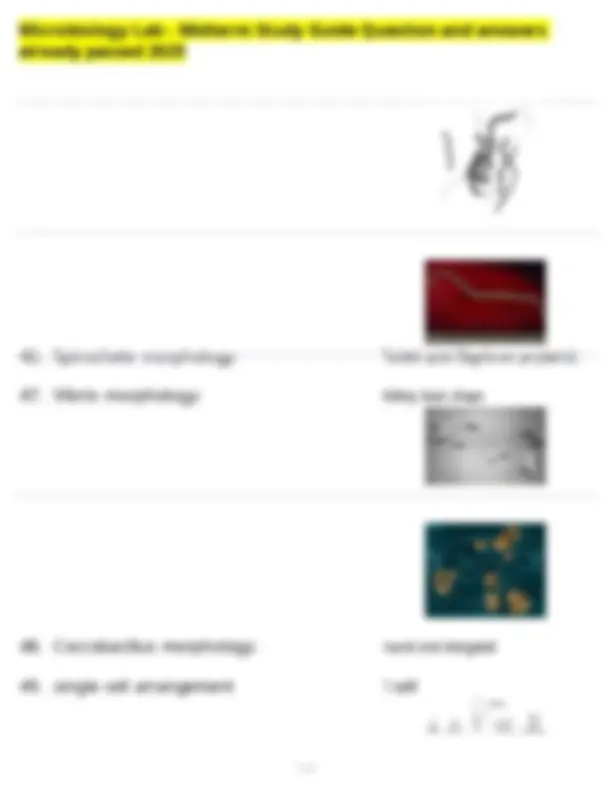

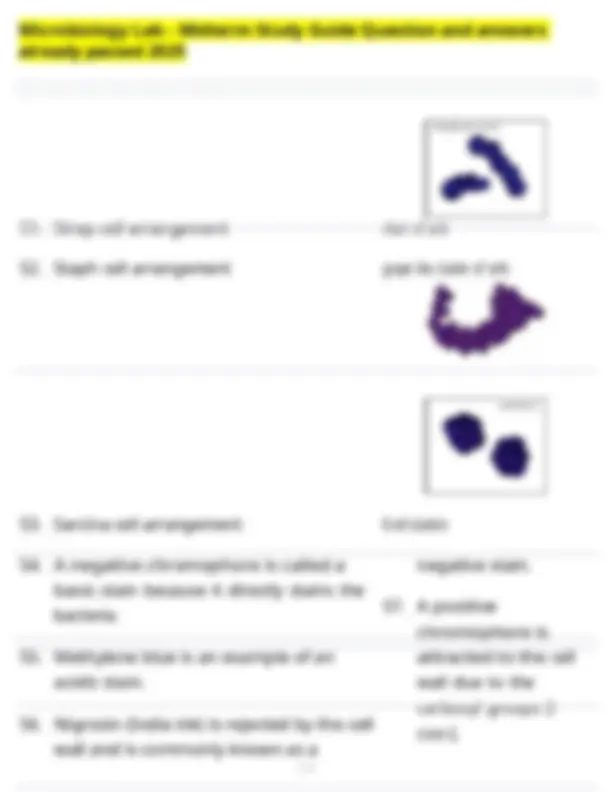

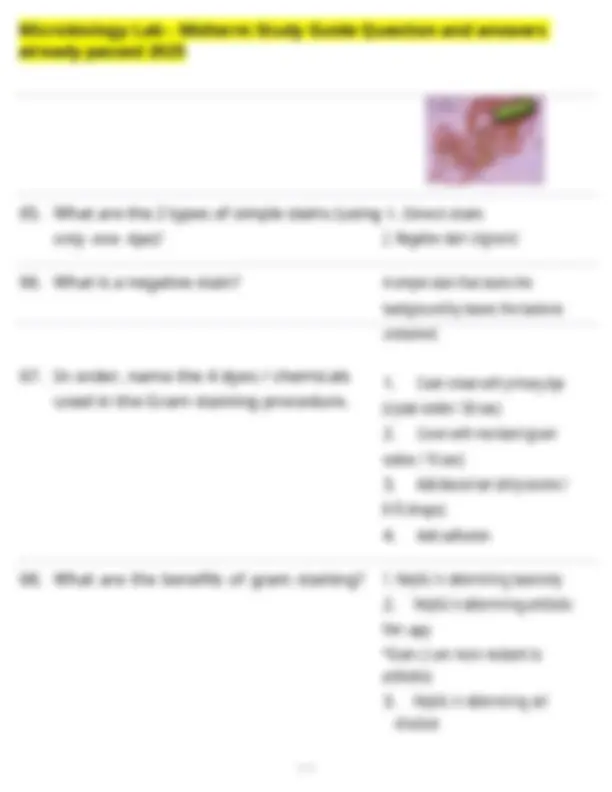
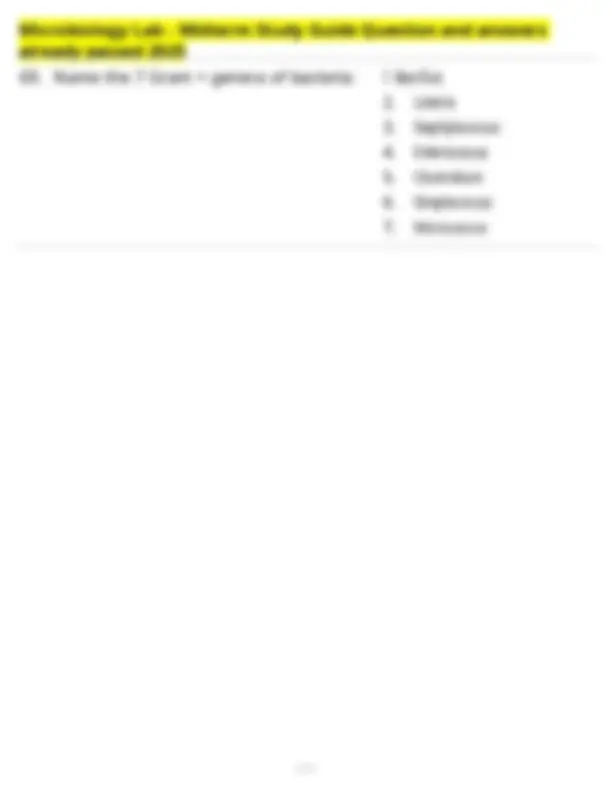
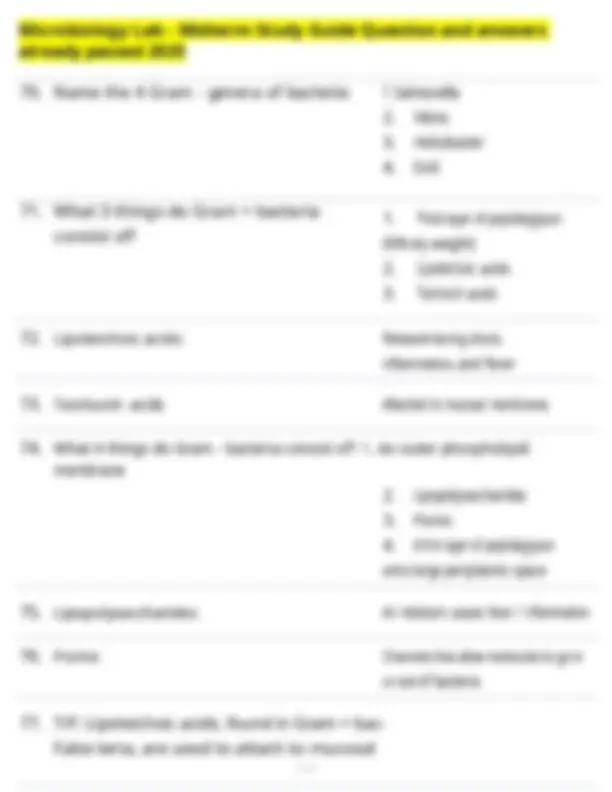
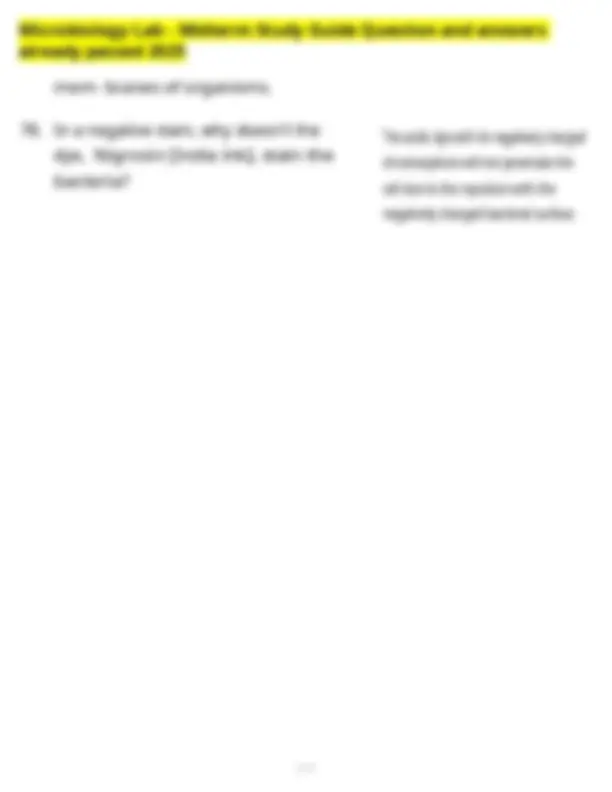
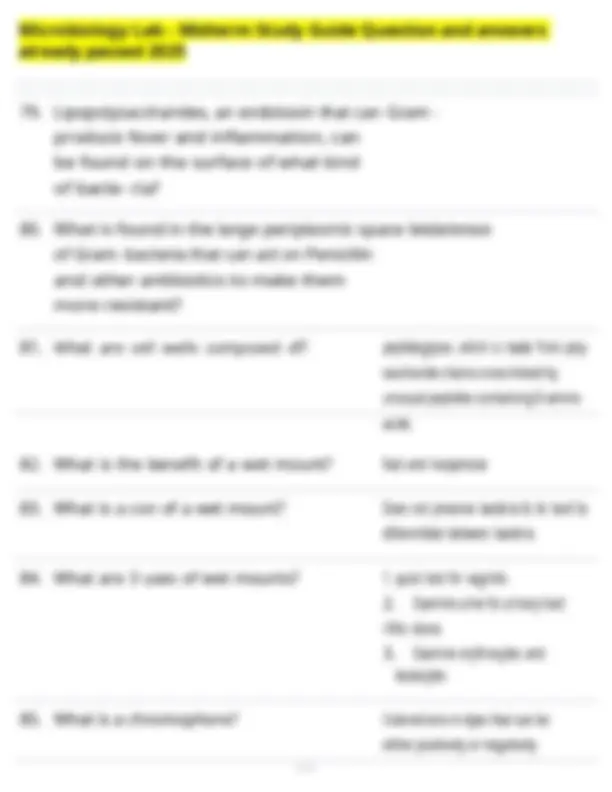
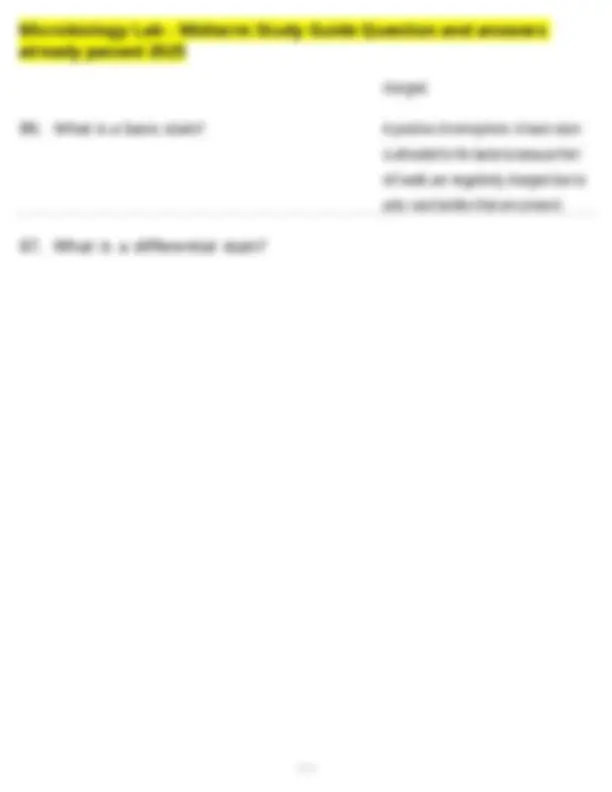
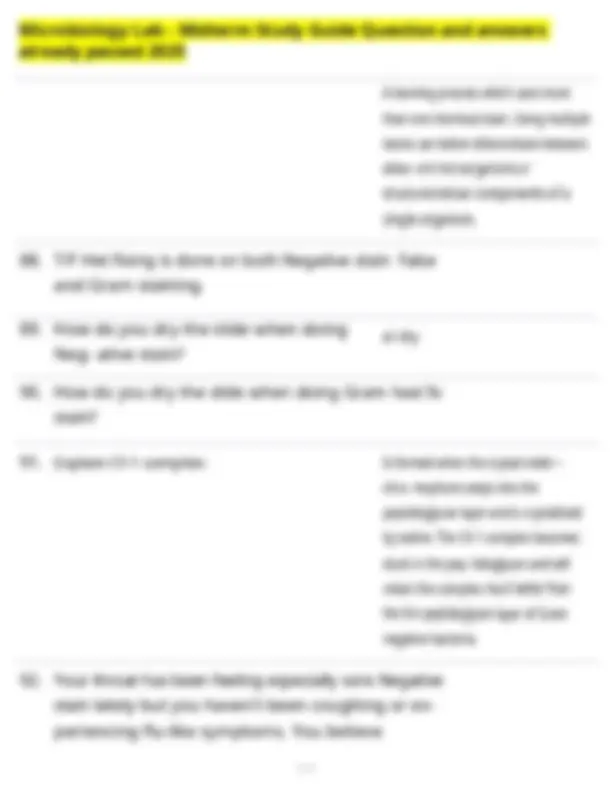
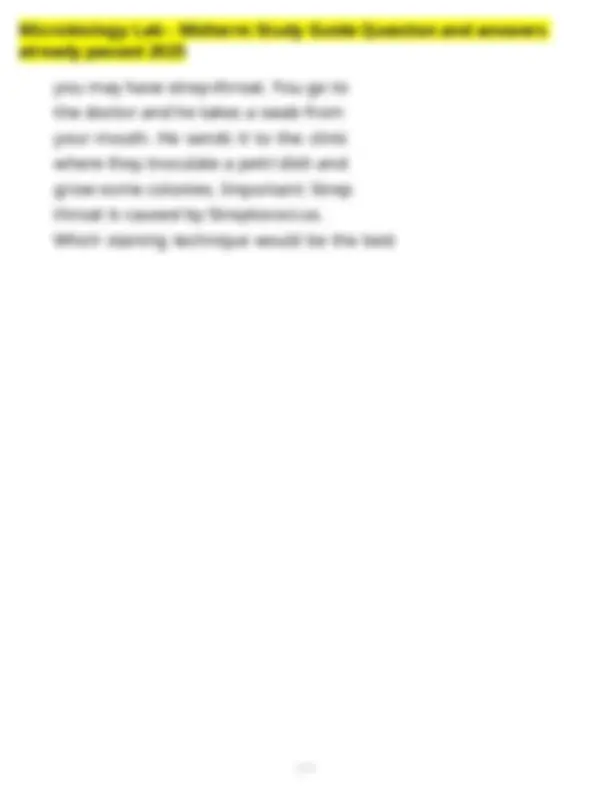
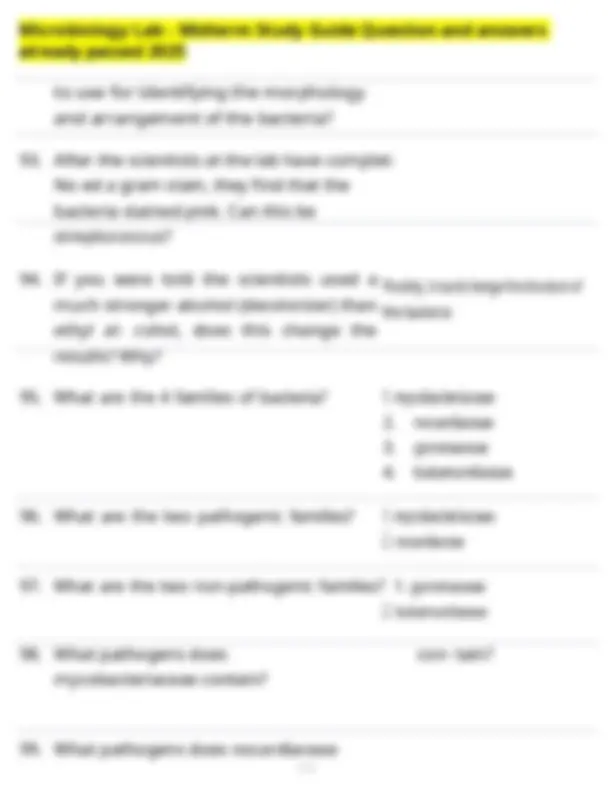
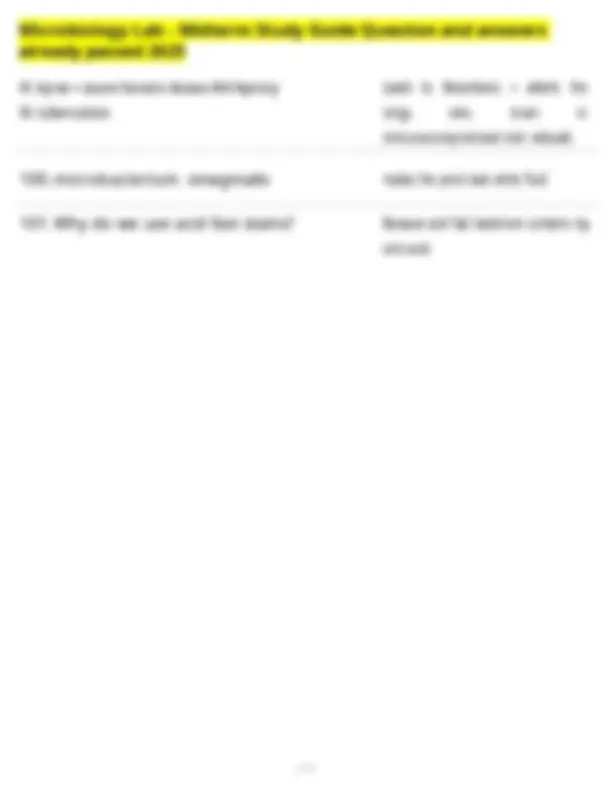
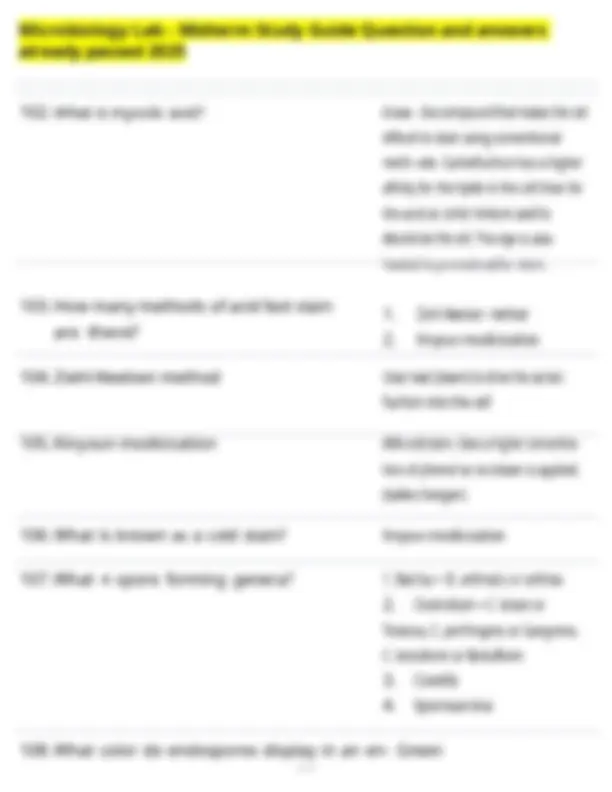
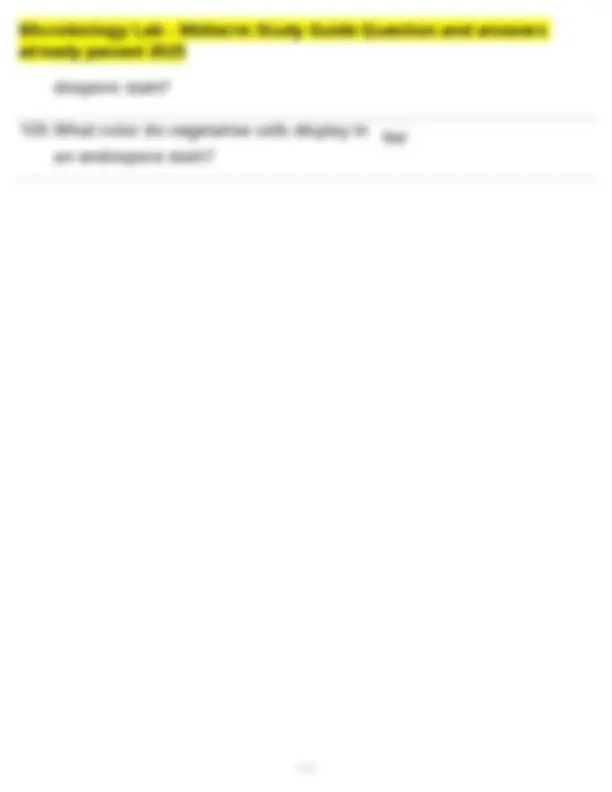
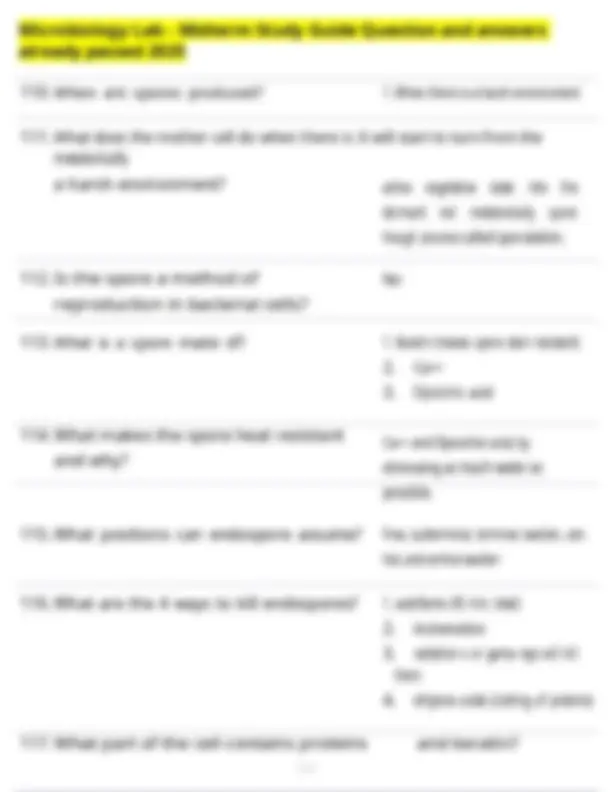
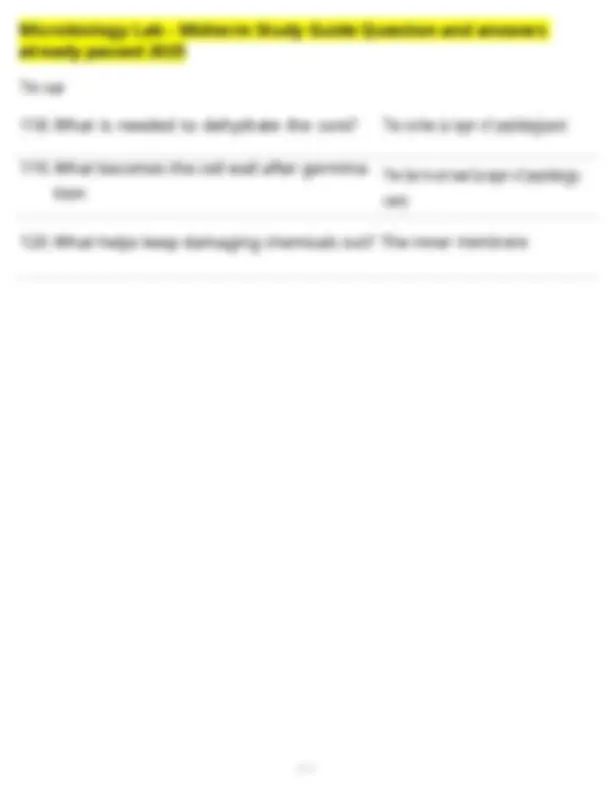
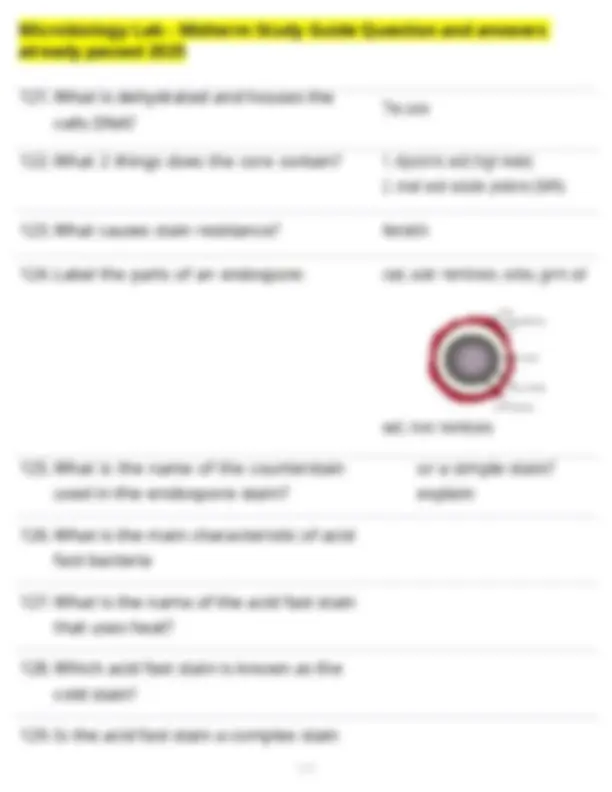
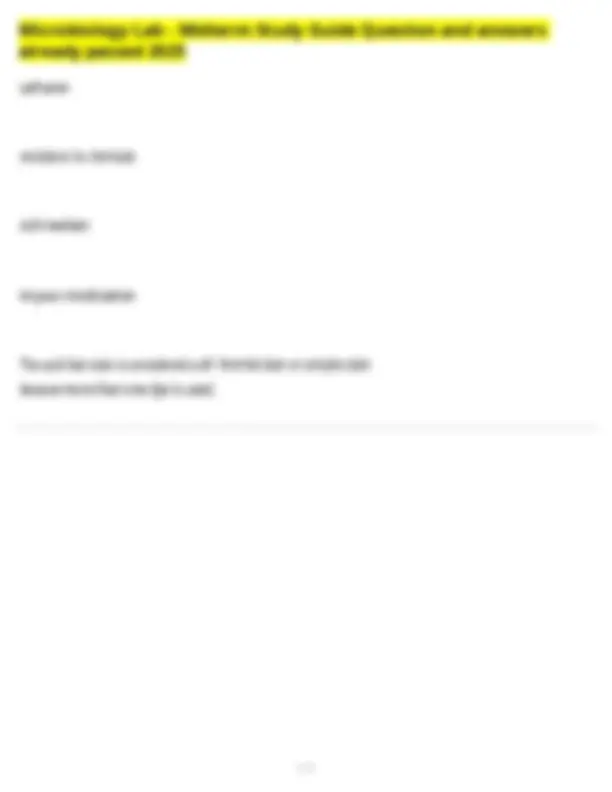


Study with the several resources on Docsity

Earn points by helping other students or get them with a premium plan


Prepare for your exams
Study with the several resources on Docsity

Earn points to download
Earn points by helping other students or get them with a premium plan
Community
Ask the community for help and clear up your study doubts
Discover the best universities in your country according to Docsity users
Free resources
Download our free guides on studying techniques, anxiety management strategies, and thesis advice from Docsity tutors
Microbiology Lab - Midterm Study Guide Question and answers already passed 2025
Typology: Exams
1 / 34

This page cannot be seen from the preview
Don't miss anything!



























already passed 2025
already passed 2025 macroscopically for growth characteristics (color, texture, size, ect.) that could be useful in analyzing the specimen contents and ultimately completing identification.
already passed 2025 have been avoided? and retrieved his loop
already passed 2025 Your mid-term and Final exam will be a prac- tical exam. (Meaning you will rotate around the lab moving station to station.)
already passed 2025
already passed 2025
already passed 2025
already passed 2025
already passed 2025
already passed 2025
already passed 2025 False False True False
already passed 2025 To perform a simple stain, what must be done to the slide first?
already passed 2025
already passed 2025